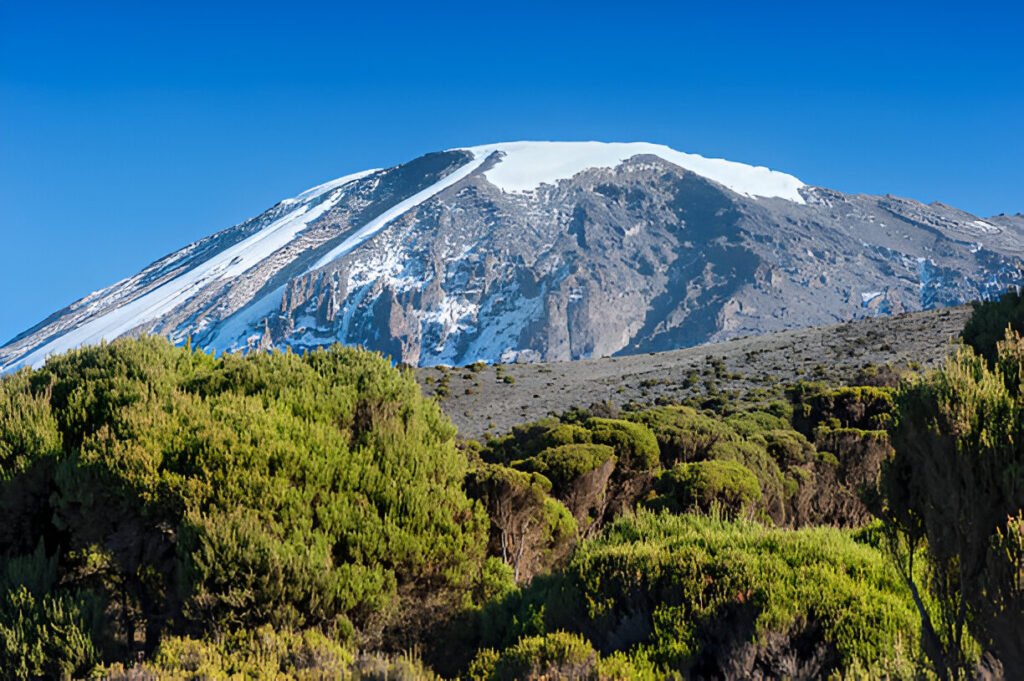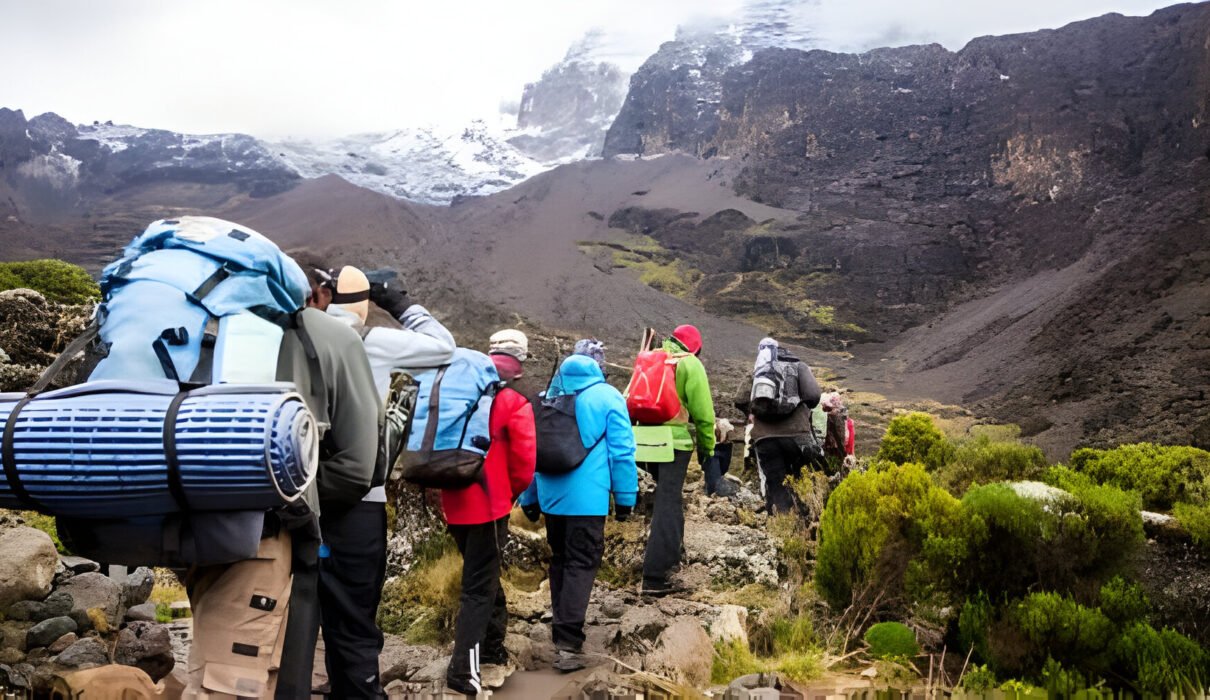Kilimanjaro Safety Essential Tips for a Secure Climb, Mount Kilimanjaro is a dream destination for adventurers worldwide. Reaching the summit of Africa’s highest peak is an incredible achievement, but it requires careful planning and attention to safety. In this guide, we’ll provide essential safety tips to help you make a secure and successful ascent, covering altitude sickness prevention, necessary gear, and expert advice for the trek.

Why Safety is Crucial on Kilimanjaro, Kilimanjaro Safety Essential Tips for a Secure Climb
Trekking Kilimanjaro is no small feat. Climbers face challenges such as altitude sickness, unpredictable weather, and physical exhaustion. Ensuring you’re fully prepared is key to a safe and enjoyable experience. Though thousands of people make the ascent each year, safety should always be the priority.
Read more about Kilimanjaro’s popularity and challenges.
Altitude Sickness: What You Need to Know, Kilimanjaro Safety Essential Tips for a Secure Climb
Altitude sickness is one of the most common risks when climbing Kilimanjaro. The summit is at an altitude of 5,895 meters (19,341 feet), where oxygen levels are significantly lower than at sea level. Symptoms of altitude sickness include:
- Headaches
- Dizziness
- Shortness of breath
- Nausea
To reduce your risk of altitude sickness, it’s essential to ascend gradually, giving your body time to acclimatize.
Learn about the effects of high altitude on the body.
Best Practices to Prevent Altitude Sickness, Kilimanjaro Safety Essential Tips for a Secure Climb
- Acclimatization: Choose longer routes, such as the Lemosho or Rongai route, which offer more time to adjust to the altitude.
- Hydration: Drink plenty of water to stay hydrated.
- Medication: Consider consulting a doctor about taking acetazolamide (Diamox) to prevent symptoms.
For more in-depth tips on altitude sickness, visit this guide.
The Importance of a Qualified Guide, Kilimanjaro Safety Essential Tips for a Secure Climb
Having a knowledgeable, experienced guide is vital to your safety on Kilimanjaro. Certified guides are trained in first aid, altitude management, and emergency procedures. They can monitor your health, pace the climb appropriately, and provide crucial advice to avoid potential hazards. Understand the importance of a Kilimanjaro guide.
For expert-guided climbs, visit Kilimanjaro Climb Specialist, where you’ll find top-notch safety and service on every trek.

Kilimanjaro Weather Conditions , Kilimanjaro Safety Essential Tips for a Secure Climb
Weather on Kilimanjaro can change rapidly, and climbers should be prepared for everything from blazing sun to freezing winds and snowfall at higher altitudes. Dressing in layers is essential for adapting to these fluctuations.
Best Time to Climb Kilimanjaro, Kilimanjaro Safety Essential Tips for a Secure Climb
To maximize safety, it’s crucial to choose the right season. The best times to climb are during the dry months of January to March and June to October. These periods offer better trail conditions, less rain, and clearer skies.
Check out a detailed breakdown of Kilimanjaro’s weather and climbing seasons.
Gear Essentials for Safety, Kilimanjaro Safety Essential Tips for a Secure Climb
Having the right gear can make a significant difference in your Kilimanjaro experience. Essential items include:
- Hiking Boots: Sturdy, well-broken-in boots are a must for long trekking days.
- Warm Clothing: Pack insulated jackets, thermal layers, and a good sleeping bag for cold nights.
- Sun Protection: High UV exposure at altitude means you’ll need sunglasses, a hat, and sunscreen.
Explore a full packing list for Kilimanjaro climbs.
Emergency Procedures on Kilimanjaro, Kilimanjaro Safety Essential Tips for a Secure Climb
Despite best efforts, emergencies can happen. It’s important to be aware of the rescue protocols on Kilimanjaro. In serious cases, climbers may be evacuated using stretchers or helicopters, depending on the severity and location.
- Evacuation: Park rangers and licensed tour operators handle most rescue operations on Kilimanjaro.
- Communication: Guides typically carry radios or satellite phones to coordinate with rescue teams.
Learn more about Kilimanjaro’s rescue protocols here.
For professional, safety-focused treks, check out Eddy Tours & Safaris.
First Aid and Health, Kilimanjaro Safety Essential Tips for a Secure Climb
Your guide should carry a first aid kit, but it’s also important to bring your own personal supplies. Include items like:
- Pain relievers (e.g., ibuprofen)
- Blister treatment
- Antiseptic wipes
- Bandages
Explore the complete guide to preparing a first-aid kit for hiking.
Staying Healthy on the Climb, Kilimanjaro Safety Essential Tips for a Secure Climb
In addition to physical challenges, keeping yourself healthy during the climb is important. Here are some key tips:
Hydration and Nutrition, Kilimanjaro Safety Essential Tips for a Secure Climb
Staying hydrated is crucial for preventing altitude sickness and maintaining energy levels. Aim to drink 3-4 liters of water daily. Eating balanced meals rich in carbohydrates will also fuel your body for the trek ahead.
Read about the importance of nutrition during high-altitude climbs.
Sustainable and Responsible Climbing, Kilimanjaro Safety Essential Tips for a Secure Climb
When climbing Kilimanjaro, it’s essential to minimize your environmental impact. Stick to designated trails to avoid damaging the fragile ecosystem. Make sure you leave no waste behind and support ethical tourism by choosing responsible operators.
Discover how to reduce your environmental footprint while hiking.
Final Thoughts: Kilimanjaro Safety is Key to Success, Kilimanjaro Safety Essential Tips for a Secure Climb
Kilimanjaro Safety Essential Tips for a Secure Climb, Climbing Mount Kilimanjaro is a rewarding and life-changing experience, but safety must always be your top priority. By taking precautions, preparing thoroughly, and choosing reliable guides, you can enjoy a successful and secure trek.
Ready to conquer Kilimanjaro safely? Visit Kilimanjaro Climb Specialist and Eddy Tours & Safaris for expert-guided tours and more information on ensuring a safe adventure.
Inclusions, Kilimanjaro Safety Essential Tips for a Secure Climb
- Quality, waterproof, four-season mountain sleeping tents (on twin sharing basis)
- Emergency Oxygen Cylinder
- Quality Mess tents with table and chairs
- Conservation fees (part of park fees)
- All transfers to the mountain and back to your Moshi hotel
- Camping or Hut fees (part of park fees)
- Clean, purified drinking water
- Guides, Porters, Cook salaries and park fees
- Sleeping Mattress
- All meals while on the Mountain
- Rescue fees (part of park fees)
- Large portions of fresh, healthy, nutritious food
- Kilimanjaro summit certificate
- VAT (18% charged by the Government)
- Professional, experienced, mountain guides
Exclusions, Kilimanjaro Safety Essential Tips for a Secure Climb
- Transfers (available as an optional addon)
- Personal Expenses (e.g. laundry, telephone, beverages, etc.)
- Surcharge for online payment of advance and balance (5% on each payment)
- Tanzania Visa
- Liquors, beers and bottled beverages
- Personal trekking equipment such as sleepings bags, hiking boots, clothes, etc (available for renting)
- Meals not listed in the itinerary
- Travel insurance
- International and domestic flights
- Tips and gratuities
- Hotel (available as an optional addon)

